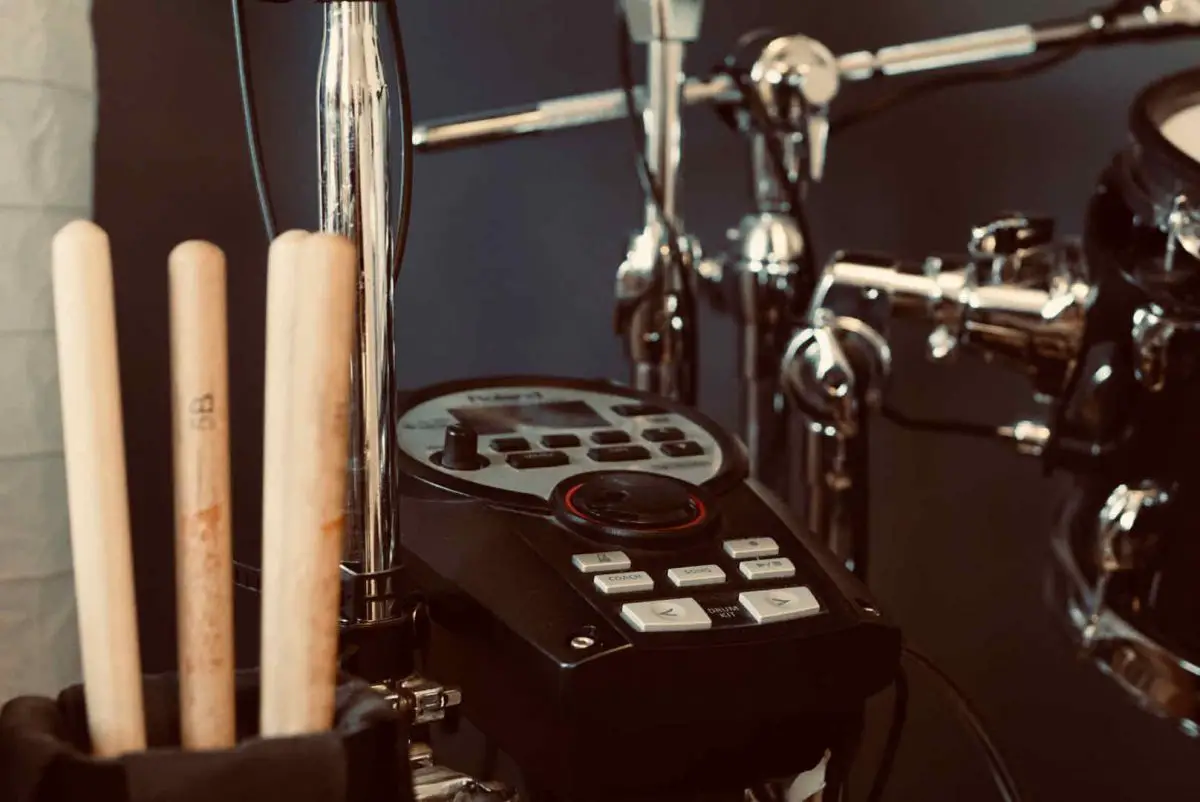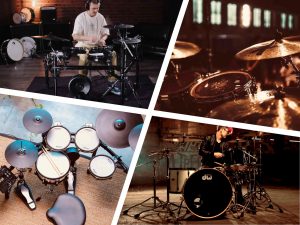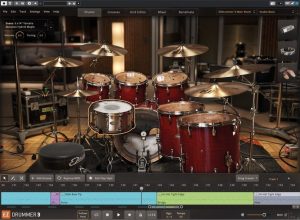Roland and Yamaha are the two market leaders in electronic drums, but are Yamaha pads compatible with Roland drum modules? Unfortunately, swapping Yamaha pads into your Roland kit is not as simple as plugging them in. There’s a high chance that certain functionality won’t work, whether it’s non-functioning drum rim zones, or mis-triggering bell-zones. Read on to discover some of the common pitfalls with mixing and matching these two eDrum brands.
Will Yamaha pads work with Roland?
Yamaha drum pads are typically the least compatible drum pads when it comes to trying to make them work with Roland or other brands of electronic drum modules. This is because Yamaha drum pads are wired up in a different way to Roland pads. Similarly, Roland pads generally don’t work properly with Yamaha modules.
Things get more confusing as Yamaha has used several different pad technologies over the years, including old-school rubber pads, silicon pads, and more recently, adopting mesh pads in the last couple of years. Right now, the Yamaha range includes electronic kits using any of these three pad technologies – even Yamaha’s own pads are not universally compatible with all of their available pads and require a compatibility table.
As a general rule, if a Yamaha pad does work on a Roland module, you should expect it to only work as a single zone pad, meaning no rimshot or cross-stick functionality.
If you really want to use a Yamaha pad, then it’s a good idea to research that pad model specifically. Roland pads use a piezo for the head and a second piezo for the rim, while Yamaha pads use a single piezo for the head and a switch for the rim, which is the technical reason behind the rim/edge zone incompatibility.
Ideally, it’s best to buy a pad that is confirmed to be compatible with your Roland module. Skip to the bottom of this article for advice on choosing a non-Roland pad, if you’re looking to save money.
Do Yamaha cymbals work with Roland?
All Yamaha cymbal pads except the smallest PCY95AT 10” pad are 3-zone, enabling edge, bow and bell sounds on Yamaha modules. However, they only work as 2-zone pads on Roland modules. Because Roland modules require two cables for a 3-zone pad while Yamaha only requires one, a Roland module is unable to distinguish the bell zone on a Yamaha pad, so playing the bell would trigger the edge sound.
The technical explanation is that while both Roland and Yamaha pads use a switch for the edge zone, a piezo for the bow, and another switch for the bell, Roland requires the second jack for the bell switch. Meanwhile, Yamaha modules can detect the bell switch via the same cable due to a different resistance in the signal.
As a result if you want to use a Yamaha cymbal pad with a Roland module, in most cases you can do so as long as you aren’t bothered by missing out on the bell zone – which isn’t an issue for crash cymbals.
To set up your Yamaha pad on a Roland module, start with the CY12 or CY14 pad preset. If your Yamaha pad is a model with a physical sensitivity dial built into, turn this up to maximum. This is because the signal from a Yamaha pad isn’t as ‘hot’ as Roland pads, so without doing this, sensitivity will be lower.
You might also want to turn up the sensitivity within the module, using the on-screen display to ensure a strong hit on the pad triggers a full strength sample, while making sure gentle hits still trigger well by adjusting the threshold setting.
This means you can use any of the current Yamaha cymbal pads on a Roland kit with the above limitations, including:
- PCY175 – 17 inch pad
- PCY155 – 15 inch pad
- PCY135 – 13 inch pad
These cymbals are generally cheaper than equivalent Roland pads, however, the safe option is definitely to buy a cymbal that is designed to work with a Roland module for the best results. Read on for some cheap Roland-compatible alternatives.
Do Yamaha Hi-hat cymbals work with Roland?
For hi-hats, the compatibility is worse than other types of cymbals, as the sensor controlling how open or closed the hi-hats are doesn’t work. Yamaha hi-hats are wired up completely differently, with the rings on the plug jacks used for different signals, plus different resistance on those signals. This means even if it were possible to rewire the TRS jacks on a Yamaha hi-hat pad, the signal being sent from it may not be ‘readable’ by a Roland module.
If you really want to use a Yamaha hi-hat with a Roland module, you can do so but only the top part – you’ll need to use a Roland-compatible controller, such as an FD8 pedal or a free-floating hi-hat controller if you want to use a traditional hi-hat stand.
However, going down the free-floating route is risky, as the controller may not be physically compatible with the underside of your chosen cymbal pad. This is only worth trying if you already have the cymbal pad and controller to avoid buying pads that don’t work together.
Do other third party pads work with Roland modules?
If you’re after a new pad for your Roland kit but don’t want to pay Roland prices, there are other options that are generally better than Yamaha, offering better compatibility. Most electronic drum products are Roland-compatible, due to the ‘Roland way’ of doing things becoming dominant in the eDrum market. In fact, brands like ATV and EFnote were actually formed by ex-Roland employees.
If you’re looking for cheap cymbals for your Roland kit, why not check out our review of the Lemon 18 inch ride or 15 inch china, or how to make your own drum pads.
Alternatively, learn more about mixing and matching drum parts and modules in this guide.




